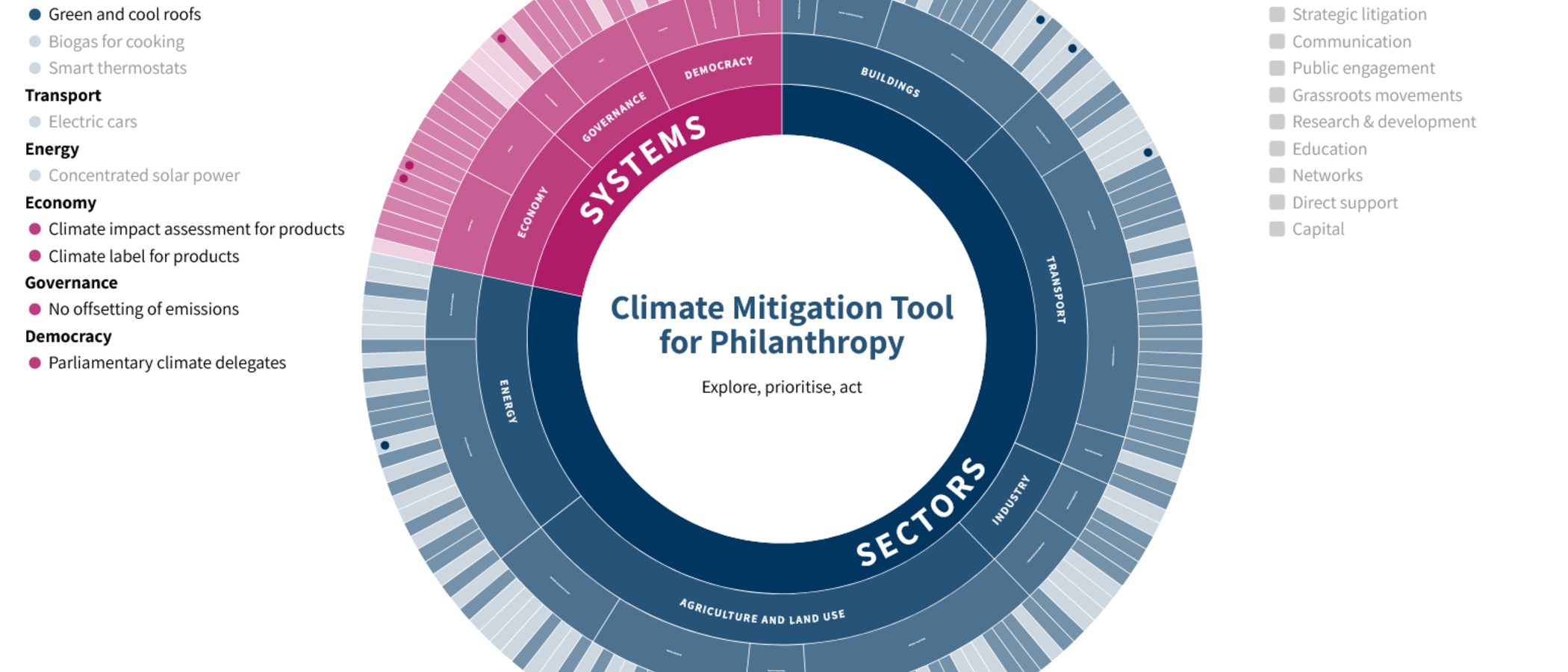A compass to understand Climate Philanthropy
Less than 2% of global charity is directed to initiatives focusing on climate change, biodiversity, and environmental issues. Given the climate crisis is the defining challenge of our age, it’s clear philanthropists must step up more boldly to scale resources in this sector. But where does one begin?
For a new funder, climate change as a sector is bewilderingly complex. It touches on nearly every aspect of our lives -- from how we power our cities to the way we grow our food; from protecting nature to reconciling social inequities. To help map the landscape of opportunities, the Center for Active Philanthropy created a new interactive tool designed for philanthropists “..seeking to understand emission reductions, linking climate solutions and policy goals with philanthropic levers.” The tool provides a first step in translating detailed technical information into opportunities for philanthropic action.

The current tool is focused on climate mitigation -- direct reduction or reversal of the greenhouse gas emissions causing climate change (a future tool may explore the landscape of climate adaptation, or how we adapt to a warming world). The online chart is designed as a “compass” to help individuals explore, prioritize, and take action on 200 distinct climate solutions.
The chart is organized by concentric circles. The inner circle divides solutions into two distinct groups: SECTORS and SYSTEMS. The former is divided into 5 sectors or levers for direct climate mitigation: Buildings, Transport, Industry, Agriculture/Land, and Energy. The second group is divided into 3 sections on indirect levers of action: Economy, Governance, Democracy. It should be noted that the relative size of each segment is not an indicator of importance, but rather the number of individual solutions contained in each wedge.
Clicking on Agriculture & Land Use, for example, opens up the inner circle, which is divided into 4 sub-sections called FIELDS OF ACTION -- Restore & Protect Nature, Improve Cultivation, Reduce Livestock, and Reduce Food Waste. Selecting the Restore & Protect Nature option will open up 10 CONCRETE SOLUTIONS that focus on the conservation of carbon-rich ecosystems and sustainable land management practices. Ranging from Tropical Forest Restoration to Indigenous Peoples’ Forest Tenure, each of the 10 options links to a webpage that gives an overview of the solution's impacts, including the amount of C02 sequestered.
For example, the Indigenous Peoples' Forest Tenure solution explains how securing the rights of Indigenous people reduces pressure for logging, thus protecting forest ecosystems and safeguarding carbon sinks. Indigenous peoples have secure land tenure on 497 million hectares globally, though they live on and manage much more. If forest land under secure tenure were to double by 2050, this would prevent 8.7-12.9 billion tonnes of carbon dioxide from being released into the atmosphere, according to Project Drawdown.
Individuals can double-click and save the solutions they are most interested in, and the creators of the tool offer a range of resources, including a Climate Philanthropy Guide (PDF), a list of climate philanthropy networks (PDF), and the opportunity to join the WE ACT pledge of foundations and family offices committed to climate change.



